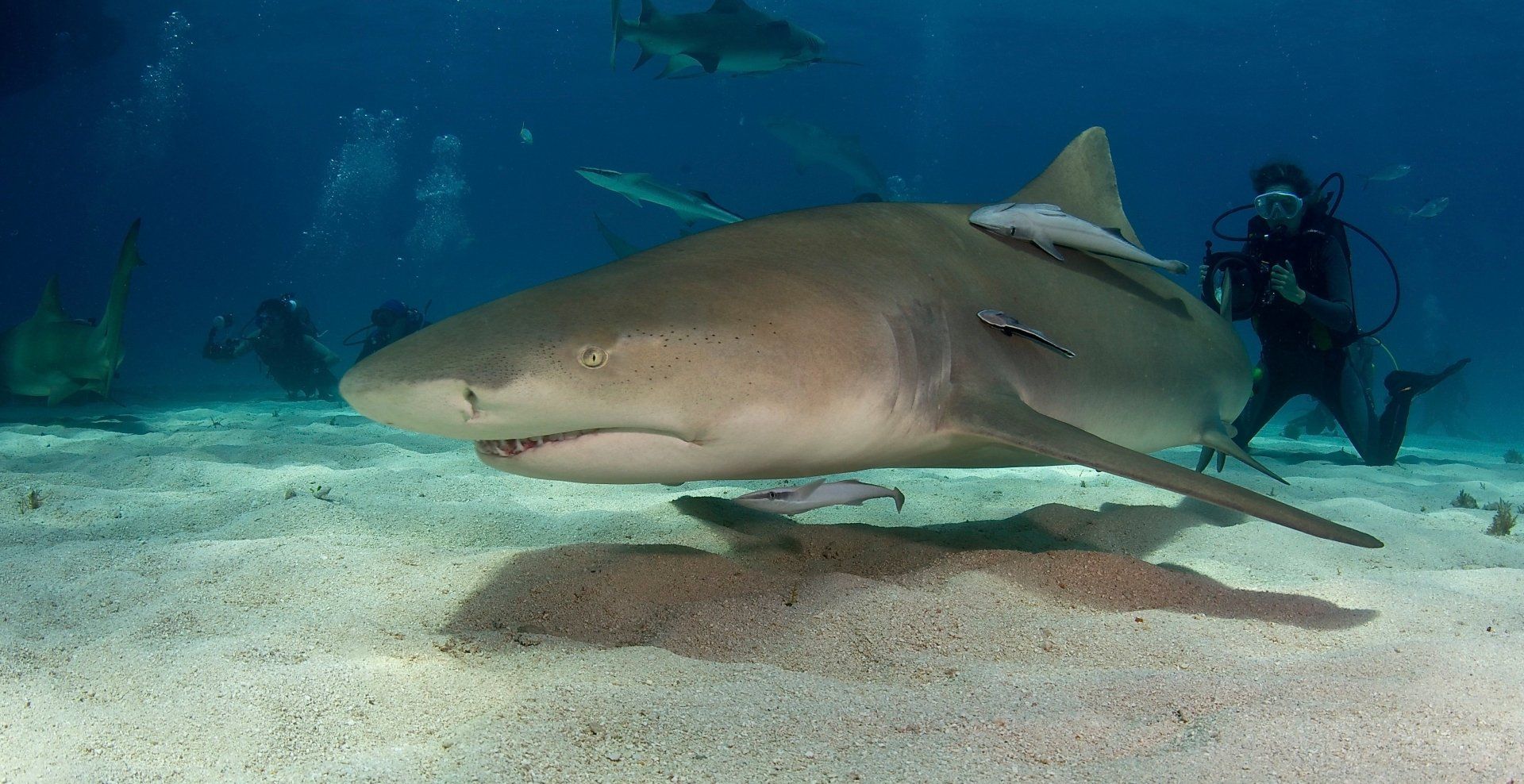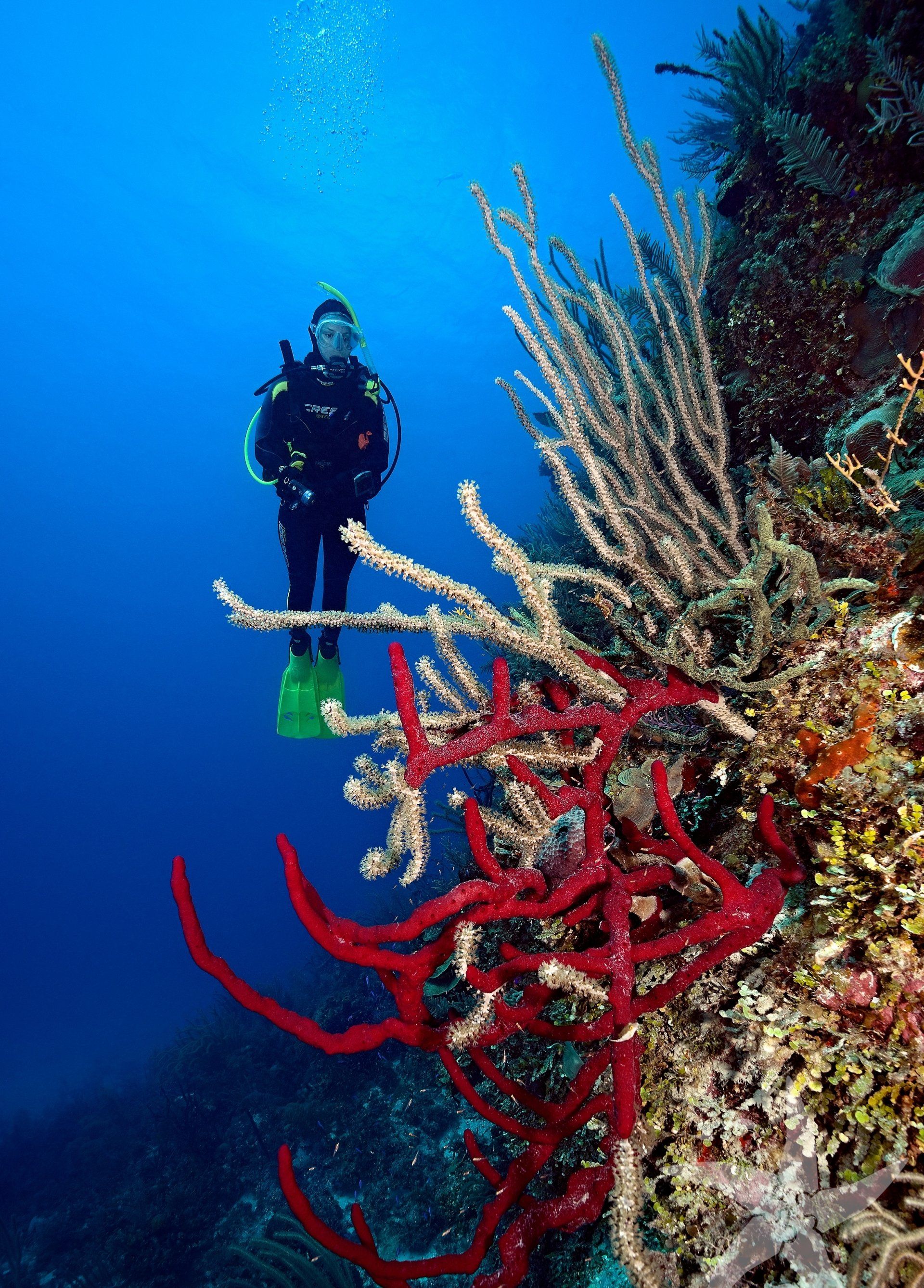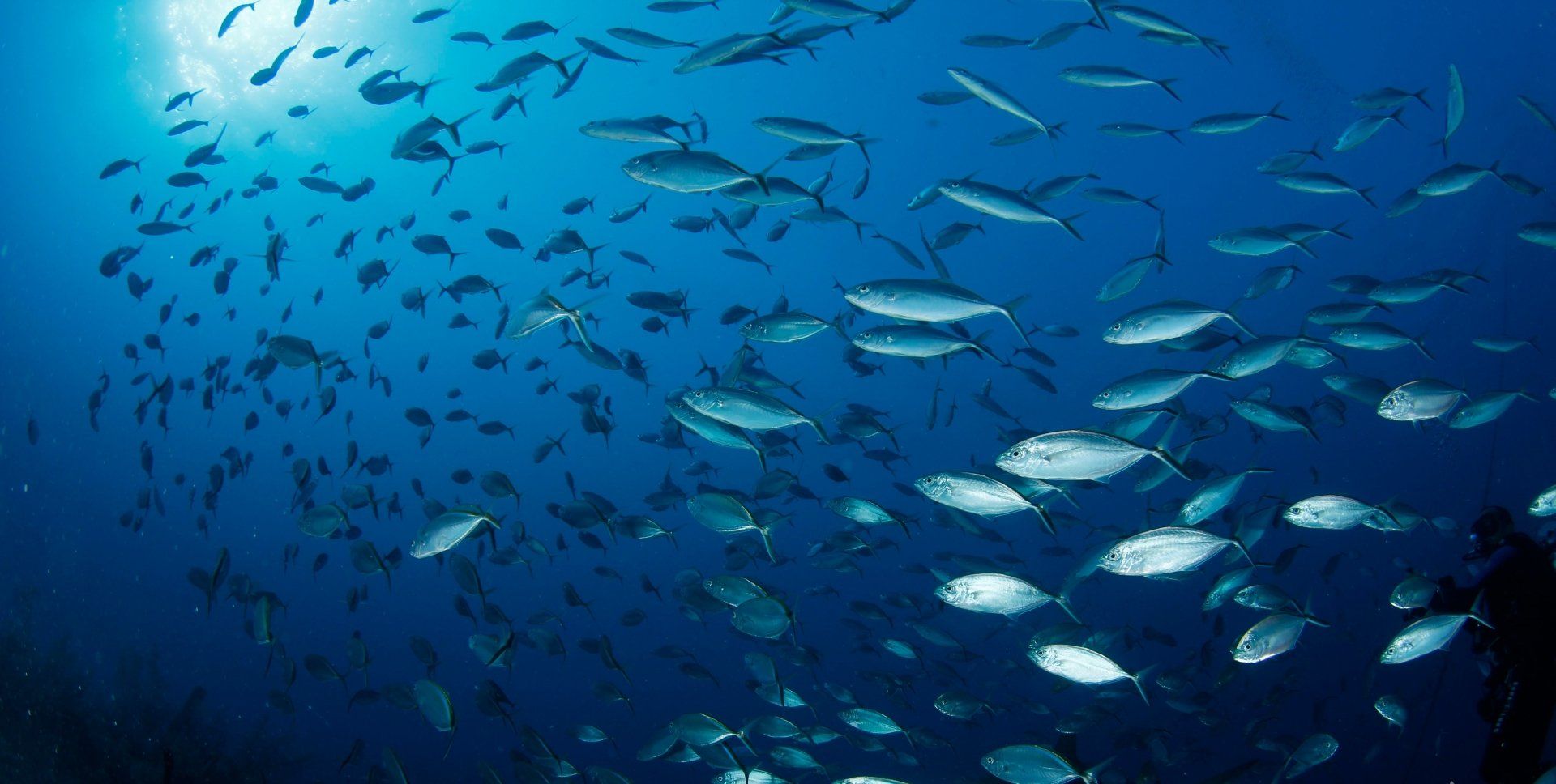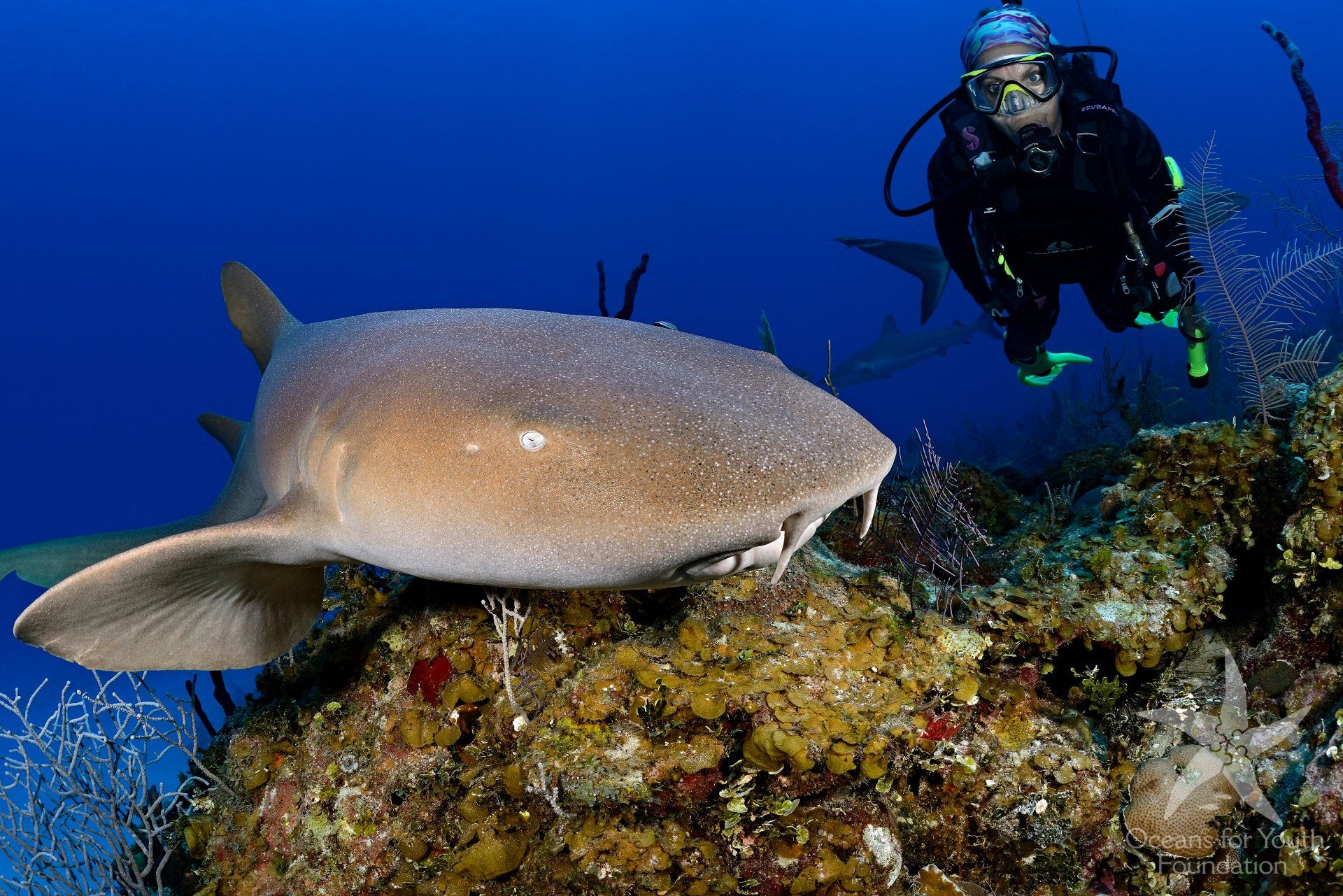Neptune Islands, South Australia
Great white sharks are probably the most powerful predator in our oceans, and their attraction for divers and shark lovers is just as powerful. Our range of great white shark diving trips take you to the best and safest locations to come face to face with these magnificent animals.
In South Australia, you’ll find the 4 Neptune Islands which hosts large groups Seals and Sea Lions, which are on the top of the Great Whites list of favourite things to nibble on all year round. This means that it is a perfect place to go to dive with these amazing creatures.The clear blue water with around 25 m visibility creates an amazing background and creates a hurricane of excitement and adrenaline as the giants appear from the blue abyss.
Manta Reef, Mozambique
The Bazaruto archipelago has been a protected area since 1971. Here you can find dugongs, dolphins, whales and turtles. In Tofo, Inhambane you can see whale sharks and manta rays. Nacala to the north of Mozambique is a beautiful area with a great diversity of sealife. The Quirimbas National Park lies along the north east of the country. The best time to go, is between May and September.A marine protected area with dugongs, dolphins, whales and turtles. The local communities share in the tourism revenues from the marine park. The park covers an area of 1430 km2, and consists of the five islands in the archipelago and the surrounding waters.


Gordon's Rock,
Galapagos
The Galapagos Archipelago is a group of 13 major islands and 100 islets and rocks some 1000 km west of mainland Ecuador, in the Pacific Ocean. The water is cold: you will need a 5-7 mm wetsuit with hood and gloves, or a drysuit. The best time to see whale sharks is from May to November, especially in the northern islands like Wolf and Darwin. You can see Hammerheads all year round. Situated at the crossroads of three ocean currents, cold water upwellings contribute to the diversity in the marine environment. Cold water arrives from the southeast via the Peru current and from the west the subsurface equatorial undercurrent (SEC) also brings cold water from the deep. From the northeast, the Panama Current brings warm water. This results in a wide range of marine ecosystems and populations, that includes from tropical species like corals and reef sharks to temperate and sub-Antarctic species like the Galapagos fur seal
Blue Corner Wall, Palau,
Micronesia
Palau offers world-class diving with sea walls, sheer drop-offs, caves and an exuberance of marine life. Palau (or Belau) is a 100-mile long archipelago, southeast of the Philippines. It hosts around 20 dive centres that use mainly small speed boats. Many liveaboards also traverse her seas. Researchers estimate that approximately 41,000 divers visit Palau each year, of which around 8,600 come specifically to dive with sharks. Palau became a nation state as recently as 1994. It is soon to establish the world's first nation-wide marine reserve, designating its entire ocean territory as an underwater sanctuary. Palau is by a deep trench and attracts large pelagic species like silky shark, manta rays, bigeye tuna, marlin and swordfish.The wet season is May to November. March and April are the best time to see sharks, with fewer turning up in May, October and November. Current and temperature are the key environmental factors affecting shark numbers, with more sharks the faster the current and the cooler the water. Visibility, moon phase and number of divers in the water have little influence on the number of sharks sighted.
Stay Connected
Read our latest updates
Never miss a message
Check out our pics
Great Blue Hole, Belize
Belize's most famous dive site is the Blue Hole, currently ranked one of the world's best dives. Belize boasts the largest barrier reef in the Northern hemisphere, and the second largest reef system in the world1. It was inscribed as a UNESCO World Heritage Site in 1996 and comprises seven protected areas including Blue Hole, Half Moon Caye and Glover's Reef Marine Reserve, Laughing Bird Caye National Park and Sapodilla Cayes Marine Reserve. Outside of the reef complex the heritage site contains atolls like Turneffe Island and Lighthouse Reef (home of the Blue Hole). Over 1400 species of marine life live here, including endangered hawksbill turtles, manatees and six threatened species of shark.
Tubbataha, Palawan,
Philippines
The Philippines is an archipelago of over 7100 islands. It is part of the "coral triangle", in which live 76% of the world's coral species, 6 of the world's 7 marine turtle species and at least 2,228 reef fish species. The central Philippines also has a particularly high number of species which are found nowhere else in the world.Diving highlights include the World Heritage site of Tubbataha, thresher sharks at Malapascua and big pelagics at Panagatan.For wreck diving head to Coron Bay in the north of Palawan. In 1944 the Americans attacked and sank 24 Japanese vessels. These include the Lusong Maru, Nanshin Maru, Tangat, Kogyo Maru, Olympia Maru and Okikawa Maru. They are decorated in marine life and fairly intact. As well as wrecks you might see Dugongs.To the east of the Philippines is the Pacific Ocean; to the south are the Sulu Sea and South China Sea.
President Coolidge, Vanuatu
The SS President Coolidge, launched in February 1931, was a luxury ocean liner. She broke several speed records on her trips to Japan from San Francisco. During World War II she became troop carrier for the American Army. In 1942 she hit mines on the way into Espiritu Santo, Vanuatu. All but two of the men got safely off the ship before she sank. She now lies on her side between 17 and 70 m, bow to stern.The President Coolidge is fully protected by law and both it and the surrounding seabed has been designated a Marine Reserve. The wreck is huge and needs several dives to do it justice.The world's largest accesible wreck. Even as a shore dive! Starts at 8 metres dropping off to 70 metres. Total penetration. Swim through the holds to see American WWII jeeps still in their crates!
Tiputa Pass, Rangiroa,
Polynesia
The Tiputa Pass is a mythical diving spot, world-renowned for its countless dolphins, hammerhead sharks and Manta rays. It is above all a scuba diving spot, This activity is only possible when the sea is calm and with incoming current (from the open sea towards the inner part of the atoll)
The Tiputa pass is located between the villages of Tiputa and Avatoru, which are the main inhabited areas of Rangiroa. Two viewpoints has been created on both sides of the pass, and are worth the detour when the current is outgoing: dolphins come jump and play in the waves, a few tens of meters from the shore.
Manta Ray Night Dive, Kailua Kona,Hawaii
The best time to dive Hawaii is between April and October. September and October have the warmest water and it is quieter then.On average, the manta rays you can see around Kona will be about 12 ft. Manta rays eat plankton which they filter out of the water by swimming with their (giant) mouths open. The reef manta rays in Hawaii do not migrate and spend their lives in the coastal waters around the islands.
Bloody Bay Wall, Little
Cayman
The Cayman Islands hosts one of the best dives in the World: Bloody Bay Wall on Little Cayman. The sea is always warm in Cayman Islands, with surface temperatures never dropping below around 25 oC (78 oF). From April to October water temperature are at least 27 oC (81 oF) and can reach over 30 oC (85 oF).Grand Cayman is the most popular with divers offering shore diving and great wall diving on its North Wall. The more upmarket hotels are on Grand Cayman. It also benefits from the Turtle Centre. Here they breed turtles in captivity, transporting their eggs to beaches and burying them to replicate what happens in nature. The baby turtles make their way down to the sea, increasing the population which later return to island's waters.
Castle Rock - Komodo,
Indonesia
Indonesia has some of the best diving in the world. It is an archipelago of around 18000 islands, 922 of them lived on. It is in the "coral triangle", so-called for the amazing numbers of corals found there. According to the Wildlife Conservation Society, Indonesia's coral reefs, seagrass meadows and mangroves are home to more than 3,000 species of fish. The reefs contain more than 500 species of corals.The best time to dive Indonesia is the dry season between between May and September, although you can dive there all year round. The water temperature is usually around 26-27 oC. It can be cooler in the Lembeh Strait owing to upwellings. Visibility is consistently good in the dry season.




